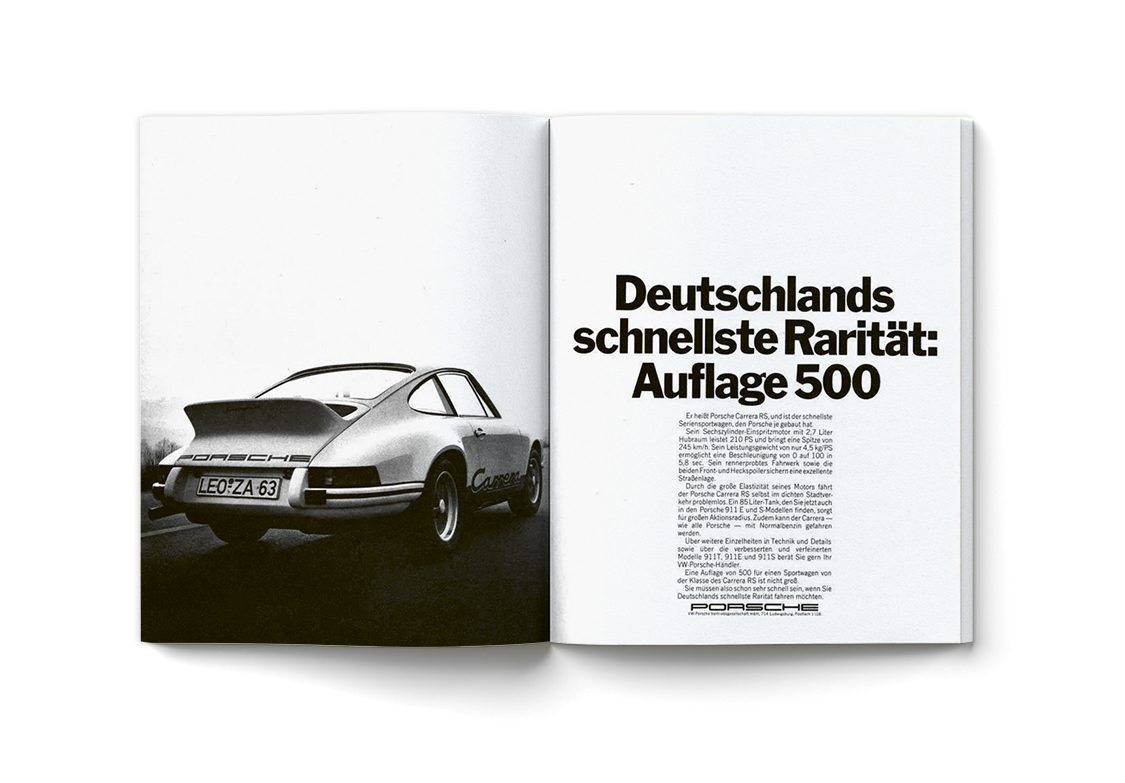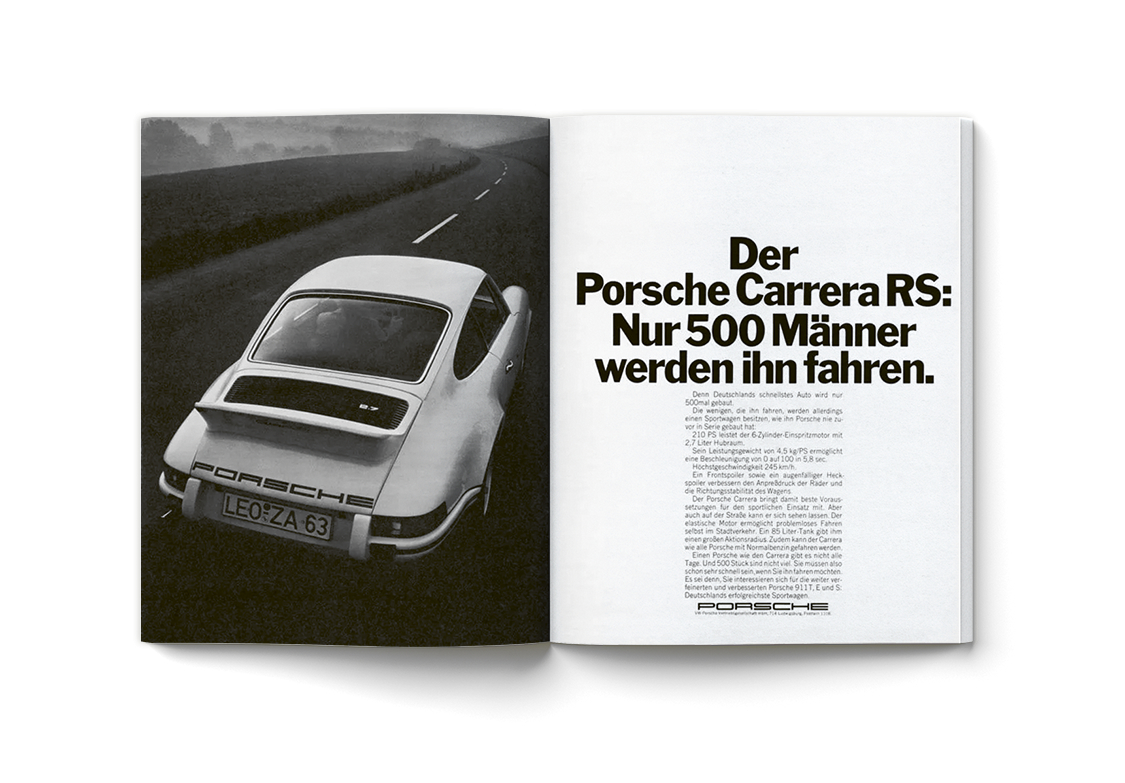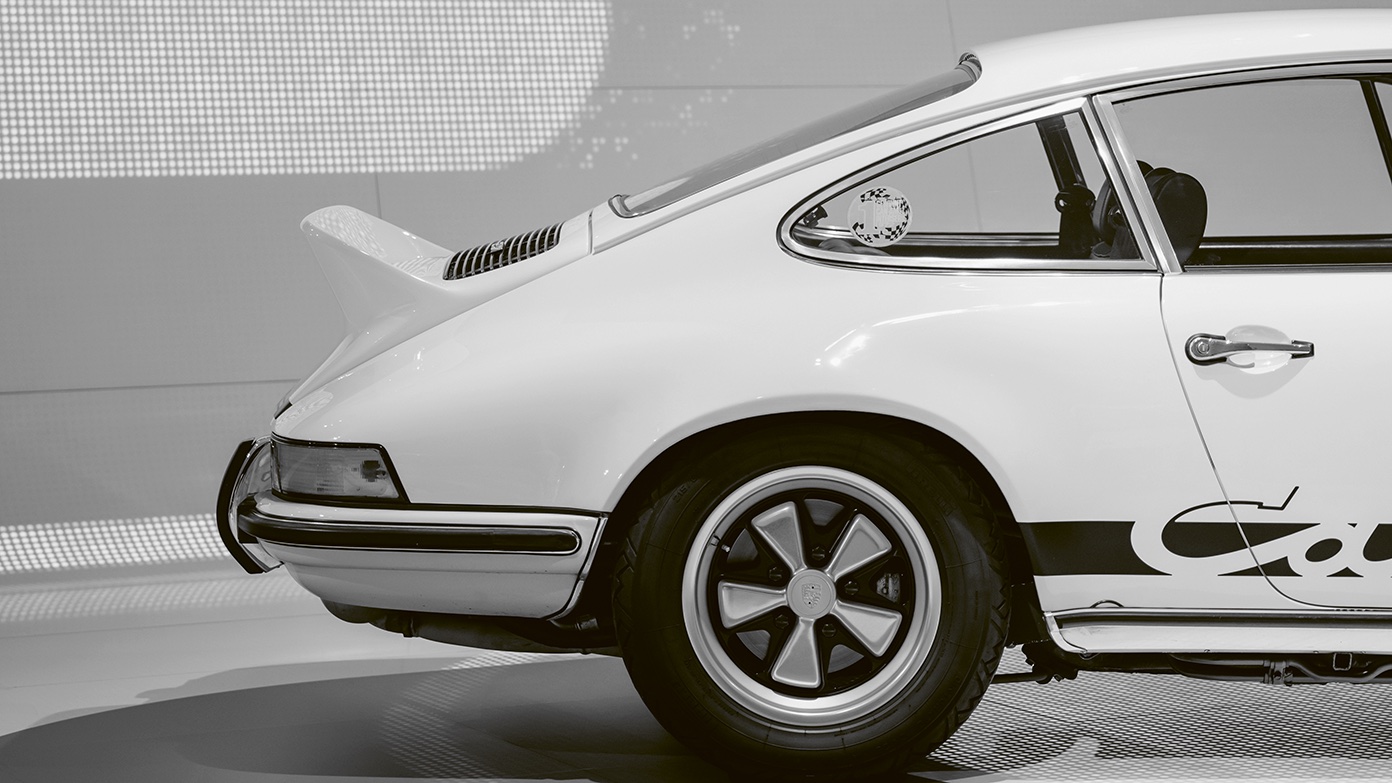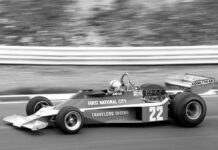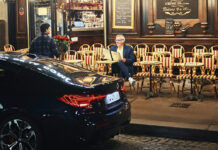Hardly any other abbreviation fascinates as much as Porsche’s RS. Every model series has been crowned with it. Here is the story. Its age doesn’t show at all. On the contrary, it looks fresher than ever. Perhaps the enormous wind simply blew the wrinkles out of his face? But he’s allowed to have laugh lines. And for good reason: It is one of the most sought-after sports cars in the world. A collector’s item – far too good to just sit in the garage. We are talking, of course, about the unique, “the one and only” „Duck Tail“ – better known as the Porsche 911 Carrera RS 2.7, which saw the light of day a little bit more than 50 years ago.

The duck-tail spoiler continues to fascinate Porsche enthusiasts to this day. This is because its shape sets it apart from the other 911s. Today, it has many epithets, but no matter what you call it, the meaning is unique: in its day, it was the fastest German production car and the first production model with a front and rear spoiler – the latter also gave it the nickname “Entenbürzel.” Even though the history of the Porsche RS is already 50 years old, the fascination of Porsche is unbroken. The shape, the technology, and the successful connection to motorsport are all pillars on which the Porsche myth, and with it especially that of the “Elfers,” is built. For decades, the 911 has been the epitome of the sports car. Anyone who buys a Porsche doesn’t just buy a car to move around in, they buy a dream on four wheels that they cherish and drive along their favorite roads on Sundays. While the 911 has moved with the times in technical terms, the “duck-tail” still possesses pure fascination. It is the ultimate in a true racing car.

Let’s look back half a decade. The year was 1972, and for some reason unimaginable today, someone at Porsche came up with the glorious idea that they could simply install a couple of plastic aprons and pro forma spoilers to try them out. Did someone have air circulation in mind? In any case, the Porsche RS still owes its nickname to this experiment. The engineers’ real focus was on an even more powerful 911 version for use in GT racing. The way was clear and the car became a cult.

Initially, Porsche planned to launch only 500 cars on the market in order to homologate the 911 Carrera RS 2.7 for Group 4, a special category of GT cars and racing. The makers did not expect that this would result in an icon that would be talked about for many generations to come. On October 5, 1972, the new model celebrated its premiere at the Paris Motor Show at the Porte de Versailles, and by the end of November all 500 vehicles had already been sold. Surprised by the success, Porsche tripled sales by July 1973, eventually producing a total of 1,580 vehicles and homologating the Porsche 911 Carrera RS 2.7 for the highly competitive Group 3 in addition to the already approved Group 4.
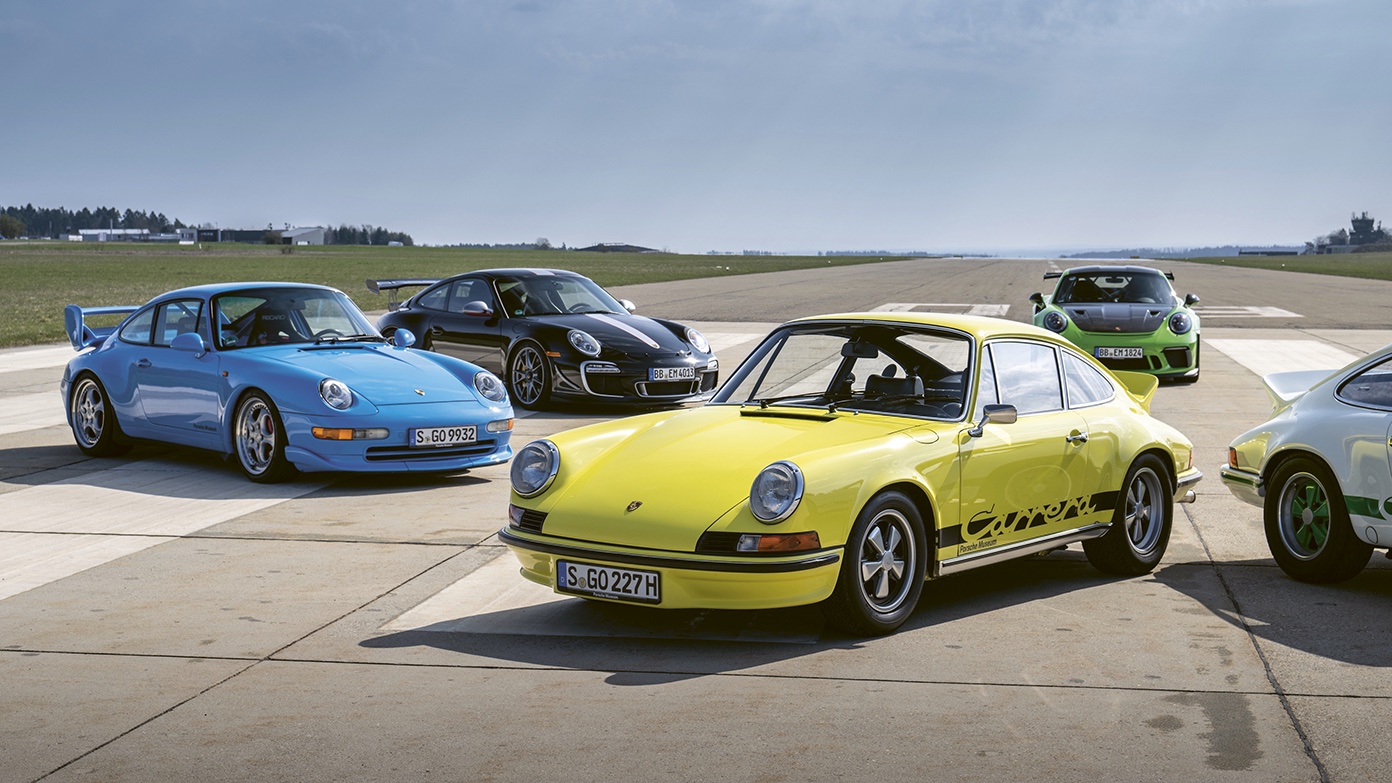
Porsche built 200 vehicles in the lightweight “Sport” version, 55 units were produced in the racing version, 17 as the base vehicle and 1,308 vehicles in the Touring version. In the 911 Carrera RS 2.7 “Light”, the interior is limited to the bare essentials, depending on customer requirements and production date; among other things, rear seats, carpets and a clock, coat hooks and armrests are missing. Two lightweight seat shells replace heavier sports seats at the customer’s request. Even the Porsche crest on the front hood is initially glued to save weight. Compared with the “Touring” equipment package, the “Sport” weighs 115 kilograms less and has an unladen weight of just 960 kilograms.
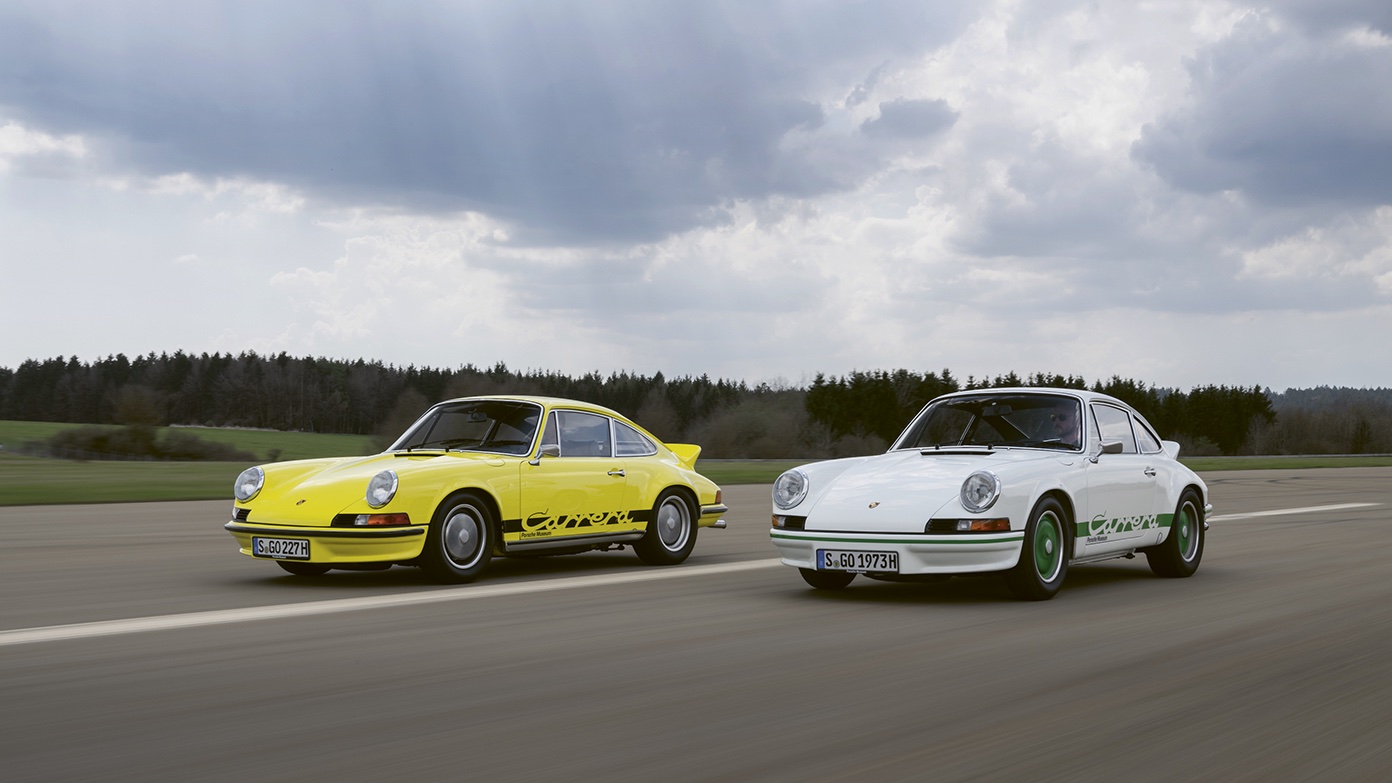
Its price: 34,000 Deutsch Marks. Even with your eyes closed, you immediately know whose engine is roaring. It’s an imposing sound that makes you can’t wait to climb behind the wheel yourself and emulate the speed and passion of the 1970s. The 2.7-liter six-cylinder boxer engine with fuel injection produces a powerful 210 hp in the 911 Carrera RS 2.7 – which was enough for acceleration from 0 to 100 km/h in 5.8 seconds in the sports version. This made the 911 Carrera RS 2.7 the first production car to break the six-second barrier in a test conducted by the German trade journal auto, motor und sport. The top speed was beyond 245 km/h.
The RS 2.7 thus laid the foundation for the ideal synthesis between weight, performance, aerodynamics and handling. Today more impressive than ever are still the great drivability in everyday driving and the way the Porsche 911 RS 2.7 brings its power to the road even at fast acceleration. With the 911 Carrera RS 2.7, however, Porsche not just developed a sports car for the racetrack, but a car that customers can equally use in everyday life. When the RS was launched, Porsche’s promotional material described it as a car that could do everything from commuting in rush hour traffic to racing on the weekend-and do it without complaining. The ad said at the time, “Its repertoire: By axle to the race and home again. Monday to the office. Tuesday to Geneva. Back in the evening. Wednesday to shopping. City. Traffic jam. Creeping traffic, but no plug sooted, no clutch on strike. Thursday country road, highway, serpentines, dirt roads, construction sites, Friday only short distance and cold starts again and again. Saturday with vacation luggage to Finland. Carrera RS – full of inexhaustible reserves in both sprints and marathons.

The most famous 911 of the 1970s was the starting signal for RS versions of further 911 generations. In the years that followed, Porsche used the name suffix “Carrera” for the most powerful cars. The Spanish word means “race” in German, and RS on the rear spoiler stands for racing. According to contemporary statements, the Carrera was also intended as a “quality predicate for a technical delicacy that has proven itself on race tracks and rally circuits.” In short: an ideal name also for the future top model of the 911. “We wanted to assign the already famous name ‘Carrera’ to a production model and thought about how we could best represent that,” recalls Harm Lagaaij, then a designer at Porsche. They decided on the area between the wheel arches.

Success on the racetrack, cult status on roads worldwide. A touch of glamour and Hollywood revels in the sound of engines. So it was no surprise when Porsche Design brought actor and motorsport enthusiast Patrick Dempsey onto the team in early 2021 and made him the face of the brand’s eyewear. Whether as an actor, director, racing driver or sportsman, Patrick Dempsey consistently pursues his ideas and visions and always tries to get the best out of himself and his projects. But the Hollywood star and the exclusive lifestyle brand are linked not only by the same initials – PD – but also by a passion for motorsport, precision and perfection. Dempsey is himself an enthusiastic Porsche driver, owns his own racing team, and thus has a long-standing, intensive relationship with the Porsche brand. As a race driver, he has competed several times in the 24 Hours of Le Mans and finished second in the GTE-Am class in 2015.

The “ducktail”: a living legend who wins more fans with every kilometer. While not priceless today, anyone flirting with one of these gems has to put more than half a million Euros on the table. Inspired by the 911 Carrera RS 2.7 from 1972, a 911 Sport Classic was launched in spring 2022 in staggered and limited numbers – not the original, but significantly more affordable for the wallet. No matter what one decides: You can’t escape the fascination of the „Duck Tail.” It is a living legend that people never tire of talking about.

Specifications
Porsche 911 Carrera RS 2.7 Touring Version
Year of construction 1973, engine air-cooled six-cylinder boxer, 2687 ccm, OHC per cylinder row, mechanical Bosch intake manifold injection, engine output 210 hp at 6300 rpm, torque 255 Nm at 5100 rpm, power transmission five-speed manual transmission, rear-wheel drive steering rack and pinion chassis front: MacPherson struts, torsion bars, stabilizer bar; rear: Trailing arms, torsion bars, telescopic shock absorbers, stabilizer bar brakes ventilated discs, weight 1075 kg, top speed 240 km/h, acceleration 0-100 km/h in 6.3 s
Porsche 911 Carrera RS 2.7 Lightweight Sport Version
Year of manufacture 1973, air-cooled six-cylinder boxer, 2687 ccm, OHC per cylinder bank, mechanical Bosch intake manifold injection, engine output 210 hp at 6300 rpm, torque 255 Nm at 5100 rpm, power transmission five-speed manual gearbox, rear-wheel drive, steering rack, suspension front: MacPherson struts, torsion bars, stabilizer bar; rear: Trailing arm, torsion bars, telescopic shock absorbers, stabilizer bar brakes ventilated discs, weight 960 kg, top speed 245 km/h, acceleration 0-100 km/h in 5.8 s
Author: Joachim Fischer
Photos: Porsche AG
First published in RETROWELT No. 24/2022

